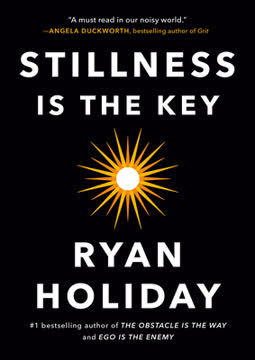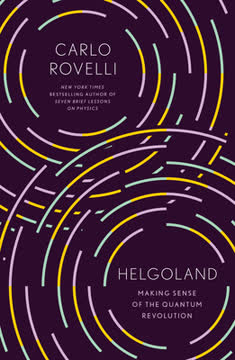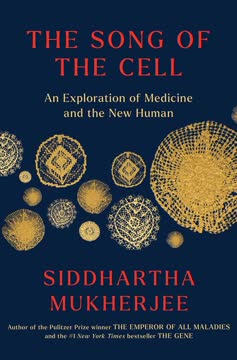Key Takeaways
1. Consciousness evolves through levels, from body to mind to soul to spirit
Human growth and development generally unfolds from body to mind to soul to spirit—not as a linear ladder, but as nested waves, with each wave enveloping its predecessor(s)—if all goes well.
The Great Chain of Being is a fundamental concept in Wilber's philosophy, describing the evolution of consciousness through increasingly complex and inclusive levels. This developmental process moves from:
- Matter/body: The physical, sensorimotor realm
- Mind: Emotional, mental, and rational capacities
- Soul: Subtle, psychic, and visionary experiences
- Spirit: Causal and nondual states of consciousness
Each level transcends and includes its predecessors, creating a nested hierarchy or "holarchy." This model integrates insights from:
- Eastern wisdom traditions
- Western developmental psychology
- Evolutionary theory
- Contemplative practices
Understanding this spectrum allows for a more comprehensive approach to human growth, spirituality, and the integration of diverse perspectives.
2. The pre/trans fallacy: Distinguishing prerational and transrational states
Both pre-rational states and trans-rational states are, in their own ways, non-rational. And so they appear quite similar or even identical to the untutored eye.
The pre/trans fallacy is a crucial concept for understanding spiritual development and avoiding common pitfalls. It refers to the confusion between:
- Prerational states: Infantile, regressive, or primitive consciousness
- Transrational states: Genuinely advanced spiritual or contemplative awareness
This confusion can lead to two types of errors:
- Elevationism: Mistaking prerational experiences for spiritual enlightenment
- Reductionism: Dismissing authentic spiritual experiences as regression
Examples of pre/trans confusion:
- Equating magical thinking with mystical insight
- Conflating emotional catharsis with spiritual liberation
- Mistaking psychedelic experiences for genuine enlightenment
Recognizing this fallacy helps differentiate authentic spiritual growth from regression or pseudo-spirituality, promoting a more discerning approach to consciousness exploration.
3. Integral practice: Engaging all levels of being for holistic growth
Take one or more practices from each of the levels of your own being—matter to body to mind to soul to spirit—and exercise all of them to the best of your ability, individually and collectively.
Integral practice is a comprehensive approach to personal development that engages all dimensions of human experience. Key components include:
Physical practices:
- Exercise, yoga, nutrition, sleep hygiene
Emotional/energetic practices:
- Breathwork, emotional intelligence training, body awareness
Mental practices:
- Meditation, cognitive therapy, journaling, critical thinking
Spiritual practices:
- Contemplation, prayer, service, ethical living
The goal is to create a balanced and synergistic approach to growth, addressing all aspects of the self. This multifaceted engagement accelerates overall development and helps prevent imbalances or blind spots in one's practice.
4. The four quadrants: A comprehensive map of reality and human experience
Given the Great Nest of Being—ranging from matter to body to mind to soul to spirit—how can we acknowledge, honor, and exercise all of those levels in our own being?
The four quadrants model provides a holistic framework for understanding reality and human experience. The quadrants are:
- Upper-Left (Interior-Individual): Subjective experiences, thoughts, emotions
- Upper-Right (Exterior-Individual): Objective behaviors, brain states, physical actions
- Lower-Left (Interior-Collective): Shared cultural values, worldviews, meanings
- Lower-Right (Exterior-Collective): Social systems, economic structures, technologies
Key insights:
- All phenomena have aspects in each quadrant
- Integrating perspectives from all quadrants provides a more complete understanding
- Neglecting any quadrant leads to partial or distorted views of reality
Applications:
- Personal development
- Organizational management
- Social analysis and policy-making
- Scientific research
- Spiritual practice
The four quadrants offer a powerful tool for navigating complexity and fostering genuine integration across disciplines and domains of human knowledge.
5. Authenticity over irony: The future of art and culture
It is not the object expressed, but the depth of the subject expressing it, that most defines art. And this shifts art and art criticism from irony to authenticity—a rather unnerving move, at least to today's eyes.
The exhaustion of postmodern irony has led to a call for greater authenticity and sincerity in art and culture. This shift reflects a broader cultural movement beyond the limitations of postmodernism:
From:
- Reflexive irony and cynicism
- Deconstructive approaches
- Surface-level engagement
To:
- Genuine expression and vulnerability
- Constructive and integrative approaches
- Depth and meaning-making
Challenges in this transition:
- Overcoming fear of sincerity and commitment
- Developing new forms of expression beyond ironic detachment
- Integrating multiple perspectives without falling into relativism
The future of art and culture may lie in exploring transrational and transpersonal realms, moving beyond both prerational naivety and rational skepticism to embrace deeper levels of awareness and creativity.
6. Development and regression: Understanding individual and cultural evolution
Development supplies the key—or certainly, a key—to this extremely difficult problem. Because in virtually all types of development that we are aware of, each succeeding stage transcends but includes its predecessor(s), and this gives us a natural, inherent, intrinsic ranking—a ranking of wholeness and depth.
Developmental theory provides a crucial framework for understanding both individual and cultural evolution. Key principles include:
Stages of growth:
- Preconventional (egocentric)
- Conventional (ethnocentric)
- Postconventional (worldcentric)
- Post-postconventional (kosmocentric)
Each stage:
- Transcends and includes its predecessors
- Offers greater depth, complexity, and inclusiveness
- Is "adequate" for its level but can be surpassed
Regression occurs when:
- Individuals or cultures move backwards to earlier stages
- Higher structures break down under stress or trauma
Understanding development allows for:
- Compassionate assessment of different worldviews
- Recognition of growth potentials and pitfalls
- Nurturing healthy individual and cultural evolution
This developmental perspective offers a nuanced approach to ethics, politics, and social change, avoiding both rigid hierarchies and flattening relativism.
7. One Taste: The nondual realization of unity with all of existence
There is One Taste. There is the Big Self, and it includes "farts, the smell of urine, a pack of lies and slander." And likewise, until the ecologists understand that the ozone hole, pollution, and toxic wastes are all completely part of the Original Self, they will never gain enlightened awareness, which alone knows how to proceed with these pressing problems.
One Taste refers to the nondual realization of ultimate unity with all of existence. This state of consciousness is characterized by:
- Direct perception of the non-separation between subject and object
- Recognition of the divine nature of all phenomena, both "positive" and "negative"
- Transcendence of dualistic categories while fully embracing the relative world
Key aspects of One Taste:
- It is not a belief or concept, but a lived experience
- It integrates absolute transcendence with full engagement in the world
- It fosters both equanimity and compassionate action
Implications of One Taste:
- Ecological awareness that includes both preserving and transforming nature
- Social engagement that combines acceptance and active change
- Spiritual practice that unites formless awareness with embodied living
One Taste represents the culmination of spiritual development, offering a profound resolution to the tensions between absolute and relative, transcendence and immanence.
8. The limitations of flatland holism and the need for genuine integration
A true holism is based on holarchy—a ranking of increasing wholeness, inclusion, embrace, and care. A true holism involves levels of love, as it were, and in both directions: Eros reaching up and Agape reaching down.
Flatland holism refers to reductionist attempts at integration that ignore crucial distinctions and hierarchies. Problems with flatland approaches:
- Equating all perspectives as equally valid
- Ignoring developmental stages and depth
- Reducing interior realities to exterior systems
A genuine integral approach recognizes:
- Qualitative differences between levels of development
- The importance of both horizontal and vertical integration
- The need for critical discernment alongside inclusivity
Key elements of true integration:
- Acknowledging the partial truths in all perspectives
- Recognizing the limitations of each viewpoint
- Situating diverse insights within a larger developmental framework
By moving beyond flatland holism, we can create more nuanced and effective approaches to personal growth, social change, and environmental stewardship.
9. Spirituality must integrate with science and liberalism to be relevant
There are two major dialogues in the modern world that I believe must take place, one between science and religion, and then one between religion and liberalism.
The integration of spirituality with science and liberalism is crucial for its relevance in the modern world. This involves:
- Dialogue between science and spirituality:
- Finding common ground in empirical investigation
- Exploring contemplative practices as forms of inner science
- Integrating third-person and first-person methodologies
- Dialogue between spirituality and liberalism:
- Embracing individual rights and pluralism
- Moving beyond mythic and dogmatic forms of religion
- Developing a "post-liberal" spirituality that transcends and includes liberal values
Challenges in this integration:
- Overcoming mutual suspicion and misunderstanding
- Developing shared language and conceptual frameworks
- Balancing universal insights with cultural diversity
Benefits of integration:
- More comprehensive worldviews
- Ethical frameworks that combine universal principles with contextual wisdom
- Innovative approaches to education, healthcare, and social policy
This integration offers the potential for a more holistic and transformative approach to human development and societal progress.
10. Constant consciousness: Witnessing awareness through all states
With meditation, you begin to relax in your seat and just watch the movie of life, without judging it, avoiding it, grasping it, pushing it, or pulling it. You merely Witness it: you employ the mirror-mind, you rest in simple, clear, spontaneous, effortless, ever-present consciousness.
Constant consciousness refers to the development of witnessing awareness that persists through all states of consciousness:
- Waking
- Dreaming
- Deep sleep
Key aspects of this practice:
- Cultivating non-reactive observation
- Recognizing the unchanging "background" of awareness
- Dissolving identification with transient experiences
Stages of development:
- Intermittent witnessing in waking state
- Lucid dreaming and dream yoga
- Awareness in deep, dreamless sleep
Benefits of constant consciousness:
- Increased equanimity and emotional resilience
- Deeper insight into the nature of mind and reality
- Potential for nondual realization (One Taste)
Cultivating constant consciousness involves dedicated meditation practice, often under the guidance of an experienced teacher. This development represents a significant shift in one's relationship to experience, offering profound possibilities for spiritual growth and self-understanding.
Last updated:
FAQ
What is One Taste: Daily Reflections on Integral Spirituality by Ken Wilber about?
- Philosophical journal format: The book is a daily journal of reflections blending philosophy, personal meditation experiences, and spiritual insights.
- Integral spirituality focus: It explores the integration of body, mind, soul, and spirit, drawing from both Eastern and Western traditions.
- Nondual realization theme: Central is the concept of "One Taste," the direct experience of unity underlying all phenomena.
- Developmental perspective: Wilber maps the evolution of consciousness through various worldviews and developmental stages.
Why should I read One Taste by Ken Wilber?
- Unique blend of theory and practice: The book combines rigorous philosophical ideas with intimate, firsthand accounts of meditation and mystical states.
- Comprehensive spiritual map: It offers a holistic, integral approach to spirituality, encouraging readers to see spiritual growth as involving all aspects of life.
- Accessible yet profound: The daily reflection format makes complex ideas approachable while building cumulative depth.
- Personal and universal relevance: Wilber’s insights are grounded in personal experience but address universal spiritual questions.
What are the key takeaways from One Taste by Ken Wilber?
- Integration is essential: True spirituality involves integrating body, mind, soul, and spirit across individual and collective dimensions.
- Nondual awareness is central: The realization of "One Taste" dissolves the boundaries between subject and object, revealing unity.
- Developmental stages matter: Spiritual growth unfolds through identifiable stages, each with its own worldview and challenges.
- Practice and embodiment: Intellectual understanding must be paired with experiential practice and embodied transformation.
What is the "One Taste" concept in One Taste by Ken Wilber?
- Nondual unity: "One Taste" refers to the direct realization that all experiences, states, and phenomena share the same divine essence.
- Ever-present awareness: It is the stable, witnessing consciousness that underlies all changing experiences.
- Transcending dualities: This state dissolves the separation between self and world, subject and object.
- Ultimate spiritual realization: Achieving One Taste is the culmination of spiritual practice, representing the ground of all being.
How does Ken Wilber’s integral approach to spirituality and consciousness work in One Taste?
- All levels and quadrants: The integral approach includes multiple levels (matter, body, mind, soul, spirit) and four quadrants (individual/collective, interior/exterior).
- Integration of knowledge: It synthesizes insights from science, psychology, philosophy, mysticism, and culture.
- Holistic development: The goal is balanced growth across physical, emotional, mental, social, and spiritual domains.
- Practical application: Integral practice informs therapy, cultural engagement, and personal transformation.
What are the major developmental stages and worldviews described in One Taste by Ken Wilber?
- Nested stages of consciousness: Wilber outlines stages from sensorimotor, magical, mythic, rational, vision-logic, psychic, subtle, causal, to nondual.
- Each stage has a worldview: These stages shape how individuals interpret reality, art, and meaning.
- Transcend and include: Each higher stage transcends but includes the previous, forming a holarchy.
- Pathological expressions: Every stage can have healthy and unhealthy (pathological) expressions.
What is the "pre/trans fallacy" in One Taste by Ken Wilber, and why is it important?
- Confusing pre- and trans-rational: The fallacy is mistaking early, prerational states for advanced, transrational spiritual states because both are nonrational.
- Reductionism and elevationism: It leads to either reducing spiritual experiences to childishness or inflating childish states to spiritual glory.
- Discernment in spirituality: Recognizing this fallacy is crucial for distinguishing authentic spiritual growth from regression or narcissism.
- Prevalent in new-age movements: Wilber critiques many new-age approaches for falling into this confusion.
How does Ken Wilber distinguish between translation and transformation in spirituality in One Taste?
- Translation as meaning-making: Translation involves creating meaning for the separate self through myths, rituals, and beliefs.
- Transformation as transcendence: Transformation is the radical shift beyond the ego, leading to liberation and authentic awakening.
- Both are necessary: While transformation is the ultimate aim, translation is a necessary preparatory stage for most people.
- Integral spirituality honors both: A balanced approach incorporates both translation and transformation appropriately.
What is integral spiritual practice according to One Taste by Ken Wilber?
- All-level, all-quadrant engagement: Integral practice involves working on physical, emotional, mental, social, and spiritual dimensions.
- Diverse practices: Examples include diet, exercise, psychotherapy, meditation, breathwork, and community service.
- Holistic development goal: The aim is to develop body, mind, soul, and spirit in a coordinated way.
- Mix and match teachers: Since few teachers cover all levels, individuals should seek guidance from multiple sources.
How does Ken Wilber describe meditation and the experience of constant consciousness in One Taste?
- Witnessing through all states: Constant consciousness is the stable awareness that persists through waking, dreaming, and deep sleep.
- Lucid dreaming and deep sleep: Advanced practice includes remaining conscious during dreams and even dreamless sleep, experiencing pure awareness.
- Path to nonduality: This leads to the realization of the timeless, spaceless Self—the ground of all experience.
- Resting as the Witness: Wilber recommends resting as the pure Seer and feeling the self-contraction without trying to eliminate it.
How does One Taste by Ken Wilber address the integration of psychotherapy and spiritual practice?
- Complementary but distinct: Spiritual and psychological development are overlapping but separate streams; one can be advanced in one and immature in the other.
- Need for integration: Meditation often neglects emotional and interpersonal growth, which psychotherapy can address.
- Balanced growth: Combining Eastern contemplative practices with Western psychodynamic therapy leads to more comprehensive development.
- Spiritual bypass warning: Realizing higher states does not automatically resolve psychological or bodily issues.
What is Ken Wilber’s critique of postmodernism and new-age spirituality in One Taste?
- Postmodernism’s pitfalls: Wilber critiques postmodernism for its extreme relativism, leading to cultural fragmentation, irony, and loss of depth.
- New-age confusion: He sees much of new-age spirituality as confusing ego with Self and lacking rigorous transformative practices.
- Need for universal pluralism: True pluralism starts with shared human commonalities and then embraces differences, avoiding regressive identity politics.
- Integral approach as corrective: Wilber’s integral model seeks to transcend and include both postmodern and new-age insights within a developmental framework.
Review Summary
One Taste receives mixed reviews, with an overall positive reception. Readers appreciate Wilber's intellectual prowess and integrative approach to spirituality, science, and philosophy. Many find the book thought-provoking and transformative. However, some criticize Wilber's writing style as repetitive and overly complex. The journal format offers insights into his daily life and meditation experiences, which some find fascinating while others see as egotistical. Despite its flaws, many readers consider the book a valuable introduction to Wilber's work and integral theory.
Similar Books
Download PDF
Download EPUB
.epub digital book format is ideal for reading ebooks on phones, tablets, and e-readers.



















